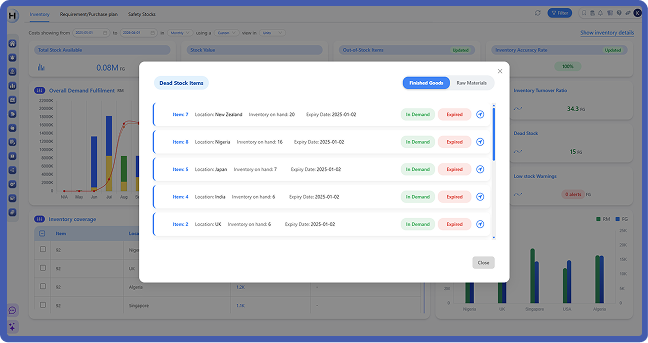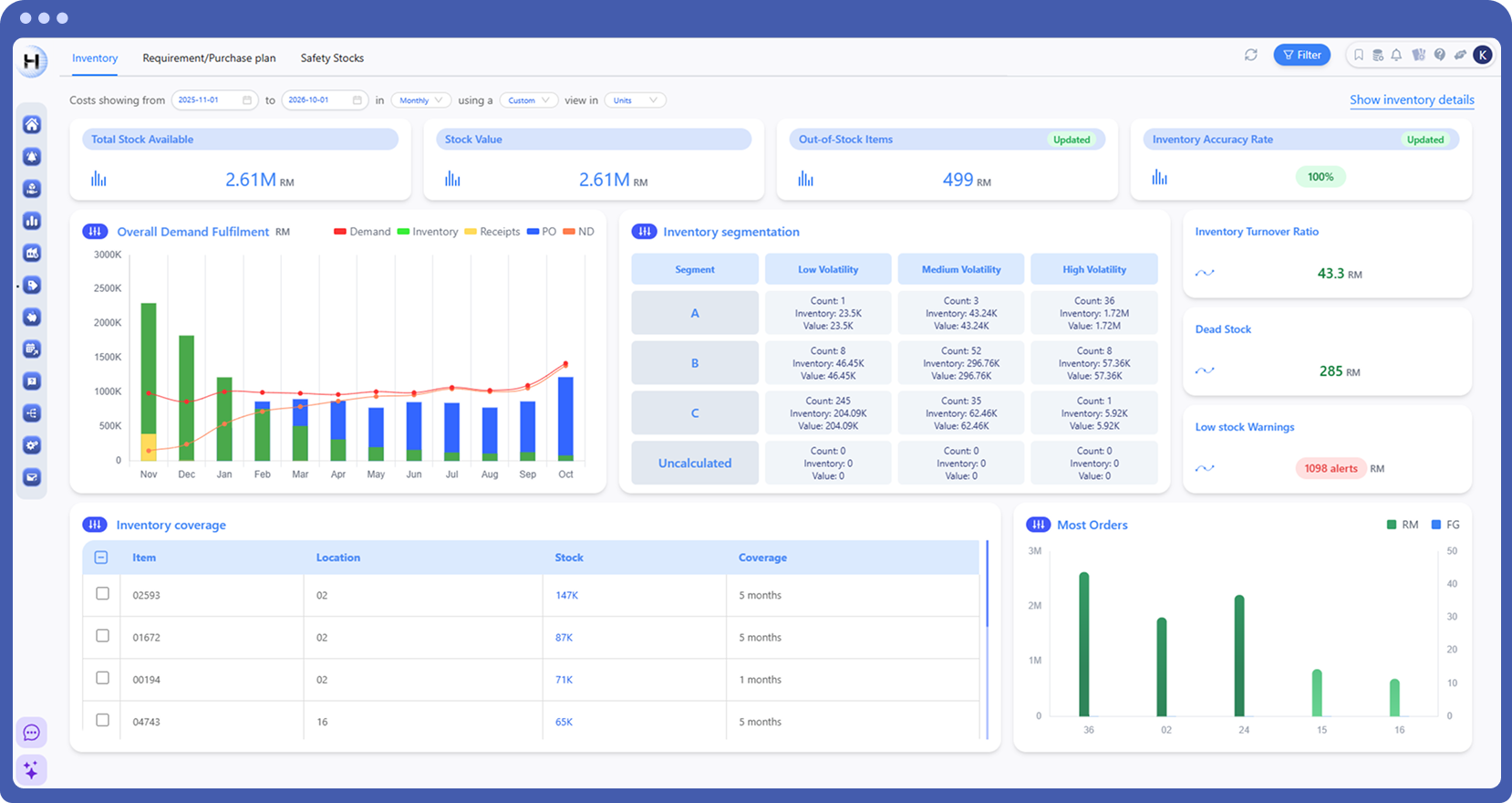


Simulate stock and service trade-offs based on demand variability and supplier constraints.
Classify items by margin, variability, or demand pattern to define smarter policies.
Run MRP simulations to calculate raw material and finished goods needs automatically.
Generate PO suggestions instantly and track confirmations from suppliers.
Frequently asked questions
-
How does inventory optimization help businesses manage stock more efficiently?
Inventory optimization is all about finding the balance between having enough stock to meet demand and not tying up too much capital.It ensures that the right products are available at the right time and place without overstocking or running out.A well-optimized inventory plan:- Minimizes carrying costs and waste.
- Reduces stockouts that lead to lost sales.
- Accounts for factors like demand variability, lead times, and shelf life.
In short, inventory optimization aligns production and procurement decisions with what the market actually needs freeing up capital while improving service levels. -
What are the most effective inventory management strategies for modern supply chains?
There’s no one-size-fits-all approach to inventory management it depends on your products, demand patterns, and service goals.However, most companies follow one of these three strategic models:Traditional control methods: Use safety stock, reorder points, or min-max levels to trigger replenishment.Optimization-driven planning: Balance working capital and service level trade-offs using mathematical and statistical models.Multi-echelon inventory optimization (MEIO): Manage inventory across multiple locations or warehouses, ensuring stock is placed where it’s most needed.By combining these strategies, businesses can reduce total supply chain cost while maintaining a consistent customer experience. -
How do AI and machine learning improve inventory optimization?
AI doesn’t just forecast demand it helps planners make smarter inventory decisions every day.Here’s how:Adaptive safety stock: Machine learning identifies demand shifts and adjusts safety stock dynamically.Anomaly detection: AI flags irregular stock movements or forecasting errors before they cause disruption.Data translation: AI transforms real-world business constraints (like supplier limits or working capital goals) into structured inputs for optimization models.While mathematical optimization (like linear and mixed-integer programming) remains the backbone of inventory planning, AI enhances it with real-time learning and faster decision support. -
How can inventory optimization software improve planning accuracy and efficiency?
Inventory optimization software takes the guesswork out of planning by turning data into actionable insights.It automates the heavy calculations and continuously updates recommendations as new forecasts come in.Here’s what a good solution should deliver:Real-time tracking: Always know your current stock position and what’s on order.Dynamic replenishment: Automatic reorder triggers based on optimized levels.Scenario modeling: Simulate different stocking strategies and evaluate cost vs. service trade-offs.Integration: Sync seamlessly with ERP and demand planning tools for a single source of truth.With software support, planners spend less time firefighting and more time optimizing. -
How does Horizon help with inventory optimization and replenishment?
Horizon is designed to make inventory planning proactive, data-driven, and business-aligned. It gives companies the tools to balance cost, service level, and working capital with ease.Here’s what sets Horizon apart:Intelligent recommendations: Optimization models that consider your service targets, costs, and supply constraints.Dynamic replenishment planning: Automatically generates replenishment proposals for raw materials and finished goods.Real-time adaptability: When forecasts change, Horizon instantly updates stocking and replenishment plans.Custom optimization goals: Whether your focus is service level, cost reduction, or cash flow.Seamless integration: Works directly with demand planning and ERP systems for end-to-end visibility.In essence, Horizon ensures you always have the right stock at the right place and time without overinvesting in inventory.




